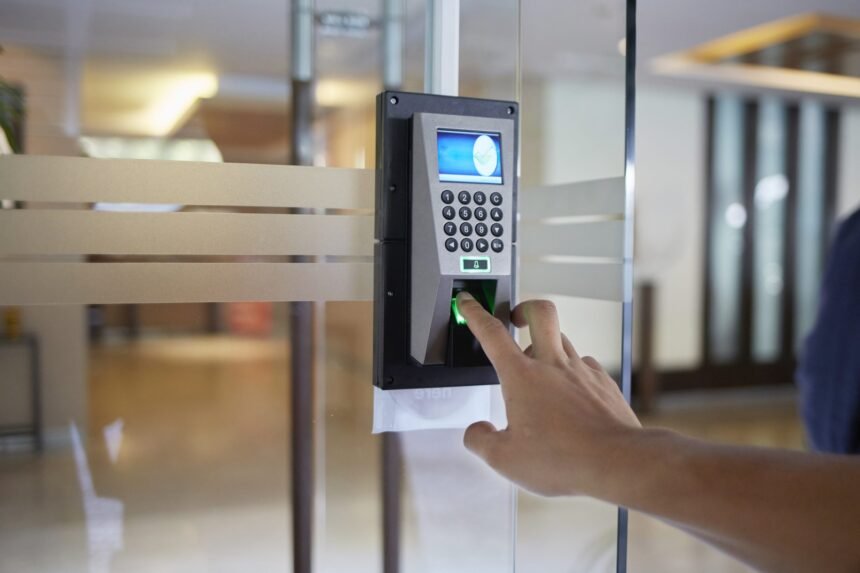Introduction
Essential parts of security management, access control systems control and monitor access to many resources, buildings, and data. These systems are quite important in safeguarding organizational assets, guaranteeing safety, and preserving operational integrity by specifying who can access particular locations or information and under what circumstances. The fundamental goals of access control systems are explored in this article together with their several functions in contemporary security plans.
Main Purposes of Access Controls System
1. Protecting Physical Assets
These systems mostly serve to prevent illegal access of physical objects, therefore protecting them. This covers offices, homes, and important infrastructure as well. Controlled access points help companies stop damage including theft, vandalism, and other kinds of damage. These systems guarantee that only authorized users may access sensitive areas, therefore lowering the risk of physical asset loss and guaranteeing the equipment and facility safety. To suit all budgets, we offer a diverse range of quality door access control system.
2. Ensuring Data Security
Digital age data security is critical. Protection of delicate information and electronic data from illegal access depends on systems. These systems assist stop data breaches and illegal disclosures by controlling who may view, change, or delete data. Organizations handling personal or confidential data especially need this to guarantee adherence to data security rules and protection of intellectual property.
3. Regulating Personnel Access
Controlling employee access to different parts of a company depends much on systems. Assigning access levels depending on roles and responsibilities helps companies to guarantee that staff members may only access places required for their jobs and to simplify operations. This not only improves operational effectiveness but also reduces internal security risk by means of illegal actions and breaches.
4. Enhancing Safety and Emergency Management
Safety and emergency management depend much on systems. By means of control and direction of access to emergency exits, these systems can enable quick evacuation in case of an emergency. They can also interact with other safety devices as fire alarms to guarantee a synchronized reaction. These systems enable us to keep a safe surroundings and properly handle crises by tracking access patterns and regulating access points.
5. Facilitating Auditing and Compliance
Following different rules and standards usually calls for thorough records of access events. Complete logging and reporting tools offered by control systems support audits and compliance initiatives. These logs enable companies to monitor who accessed specific sections and when, therefore offering useful data for performance assessments, regulatory compliance, and security investigations.
6. Preventing Unauthorized Access
Access control systems primarily serve to stop unwanted access to restricted locations. These systems guarantee that only those with the correct credentials may enter certain zones by using techniques such as PIN codes, biometric scans, and key cards. This helps to reduce hazards related to illegal access including theft, sabotage, and other security lapses.
7. Improving Operational Efficiency
By simplifying access procedures and thereby lowering the demand for hand security checks, access control systems help to contribute to operational efficiency. Large numbers of access requests can be rapidly and precisely handled by automated systems, therefore reducing delays and increasing general output. Time management is another area where this efficiency applies since electronic systems can incorporate time and attendance monitoring tools.
8. Supporting Remote Access Management
Access control systems have evolved to oversee remote access to resources and facilities as remote work and distributed teams become more common. These systems let remote workers access required systems and data while keeping strong security by using virtual access restrictions and safe authentication techniques. This adaptability helps contemporary employment schedules without sacrificing security.
9. Enhancing User Experience
User experience is considered in the design of contemporary access control systems. For authorized users, these technologies improve convenience by offering simple interfaces and seamless access techniques including mobile credentials and contactless entry. Enhanced user experience not only raises happiness but also encourages adherence to security protocols and lowers the possibility of illegal efforts.
10. Supporting Integration with Other Security Systems
Many times, access control systems are coupled with additional security systems such as building management systems, alarms, and surveillance cameras. This connection offers a complete security solution, therefore enabling synchronized reactions and improved monitoring capacity. Access events, for instance, can set off alarms or camera recordings, therefore providing a multi-layered strategy of security.
11. Managing Access in Multi-Tenant Environments
Access control systems are essential for managing and isolating access in settings whereby several companies or entities use a shared space. These systems limit access to common areas as necessary and guarantee that every renter or business has authority over their assigned regions. Maintaining security and operational effectiveness on multi-tenant buildings or campuses depends on this kind of management.
Conclusion
From safeguarding physical assets and guaranteeing data security to improving operational efficiency and supporting remote access, access control systems play a multifarious function in modern security management. Strong access control policies help companies protect their assets, keep compliance, and provide a safe and effective surroundings for staff members and guests both. Access control systems will always be a key element of the approach to safeguard and regulate priceless resources as security issues change. Visit thesimplesource for more informative articles.
How To Choose Home Monitoring System for Your Residential Safety





